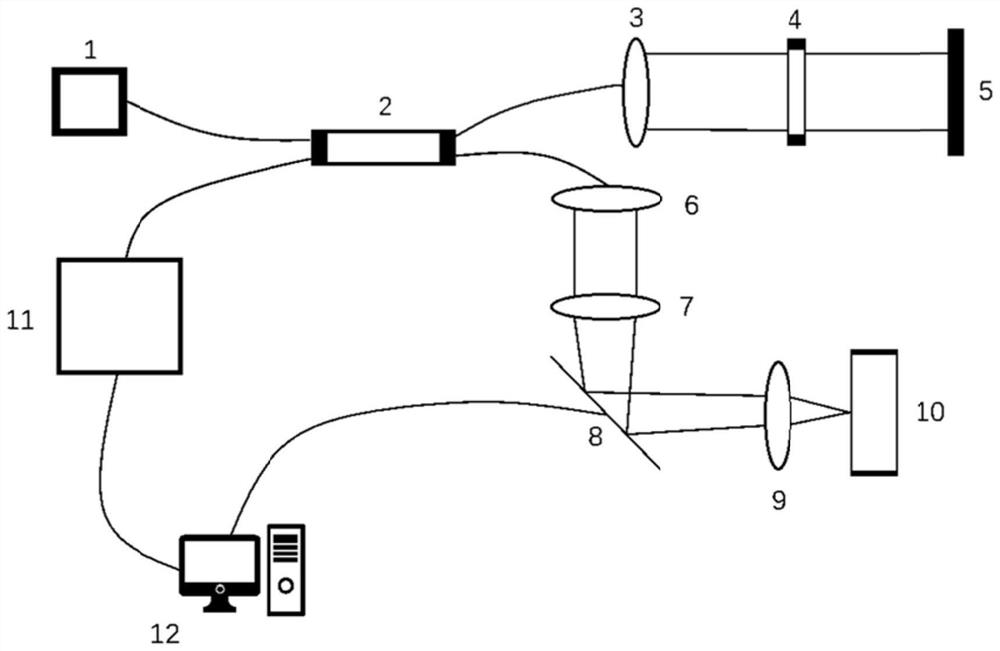Optical coherence tomography system for burnt skin
An optical coherence tomography and imaging system technology, applied in the field of optical coherence tomography, can solve the problems of rough two-dimensional image information, low resolution, high cost and technical difficulty, etc., achieve good blood flow sensitivity, and the system is simple and compact , the effect of supporting clinical diagnosis
- Summary
- Abstract
- Description
- Claims
- Application Information
AI Technical Summary
Problems solved by technology
Method used
Image
Examples
Embodiment Construction
[0037] The idea, specific structure and technical effects of the present invention will be clearly and completely described below in conjunction with the embodiments and accompanying drawings, so as to fully understand the purpose, scheme and effect of the present invention. It should be noted that, in the case of no conflict, the embodiments in the present application and the features in the embodiments can be combined with each other.
[0038] figure 1 Shown is a structural diagram of an optical coherence tomography system for burned skin, combined below figure 1 A system according to an embodiment of the present invention will be described.
[0039] The present invention proposes an optical coherence tomography system for burned skin, specifically comprising: a light source (1), an optical fiber coupler (2), collimating lenses (3 and 6), and the first collimating lens is a collimating lens (3), the second collimating lens is a collimating lens (6), a dispersion compensati...
PUM
| Property | Measurement | Unit |
|---|---|---|
| Center wavelength | aaaaa | aaaaa |
| Bandwidth | aaaaa | aaaaa |
Abstract
Description
Claims
Application Information
 Login to View More
Login to View More - R&D
- Intellectual Property
- Life Sciences
- Materials
- Tech Scout
- Unparalleled Data Quality
- Higher Quality Content
- 60% Fewer Hallucinations
Browse by: Latest US Patents, China's latest patents, Technical Efficacy Thesaurus, Application Domain, Technology Topic, Popular Technical Reports.
© 2025 PatSnap. All rights reserved.Legal|Privacy policy|Modern Slavery Act Transparency Statement|Sitemap|About US| Contact US: help@patsnap.com



